In the circuit shown in fig, if the switch S is closed at t=0 , the capacitor charges with a time constant
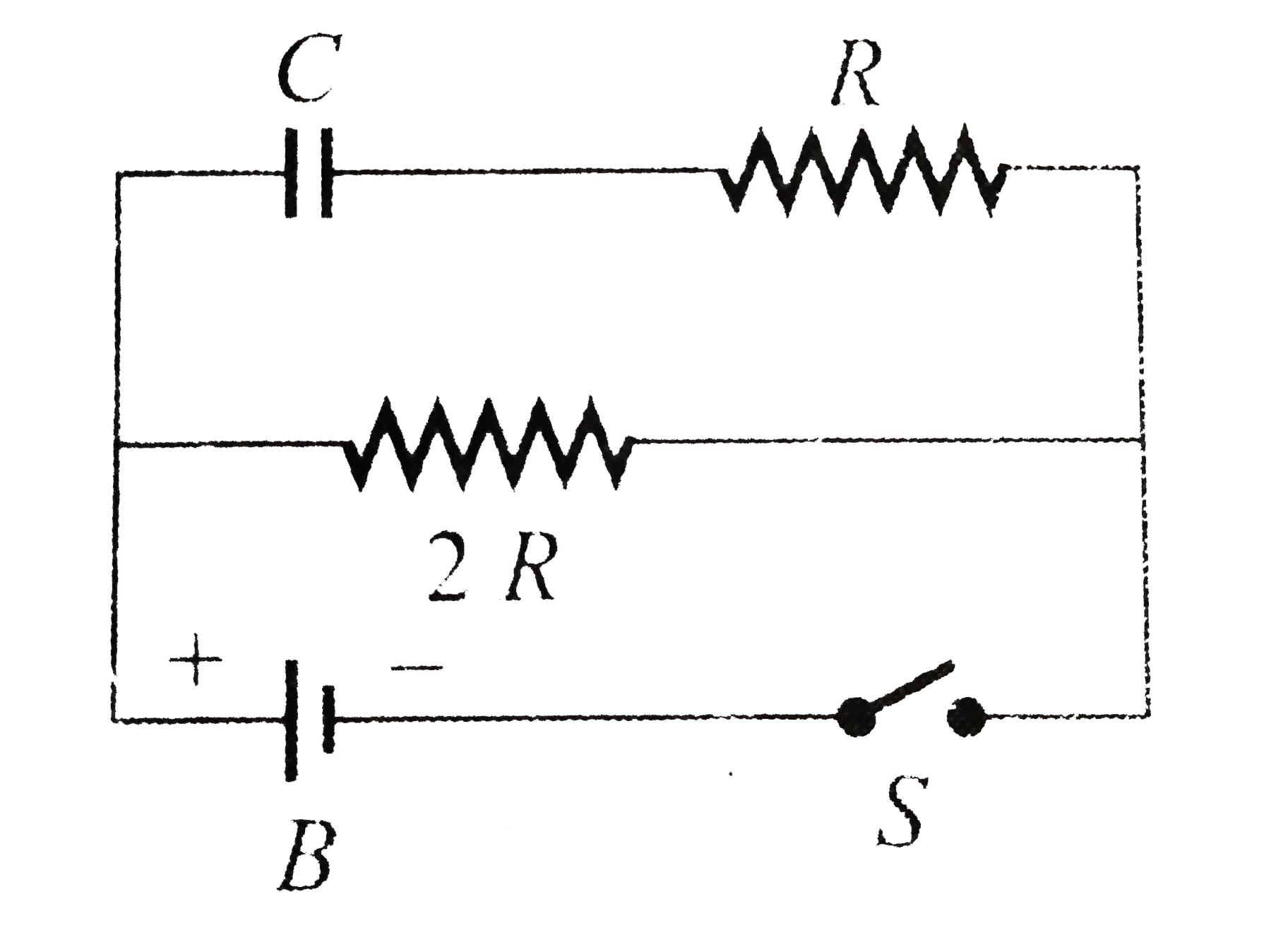
Ceff=((C1)C2C1+(C2))
q=Ceffε(1−e−1nc) .
Topper's Solved these Questions
- BOOK - HC VERMA ENGLISHCHAPTER - ELECTRIC CURRENT IN CONDUCTORSEXERCISE - questions for short answer17videos
ELECTRIC CURRENT IN CONDUCTORS
- BOOK - HC VERMA ENGLISHCHAPTER - ELECTRIC CURRENT IN CONDUCTORSEXERCISE - objective 29videos
ELECTRIC CURRENT IN CONDUCTORS
- BOOK - HC VERMA ENGLISHCHAPTER - DISPERSION AND SPECTRAEXERCISE - Question for short Answer6videos
DISPERSION AND SPECTRA
- BOOK - HC VERMA ENGLISHCHAPTER - ELECTRIC CURRENT THROUGH GASESEXERCISE - Short answer6videos
ELECTRIC CURRENT THROUGH GASES
Similar Questions
In the circuit shown in fig. when the switch is closed, the capacitor charges with a time constant
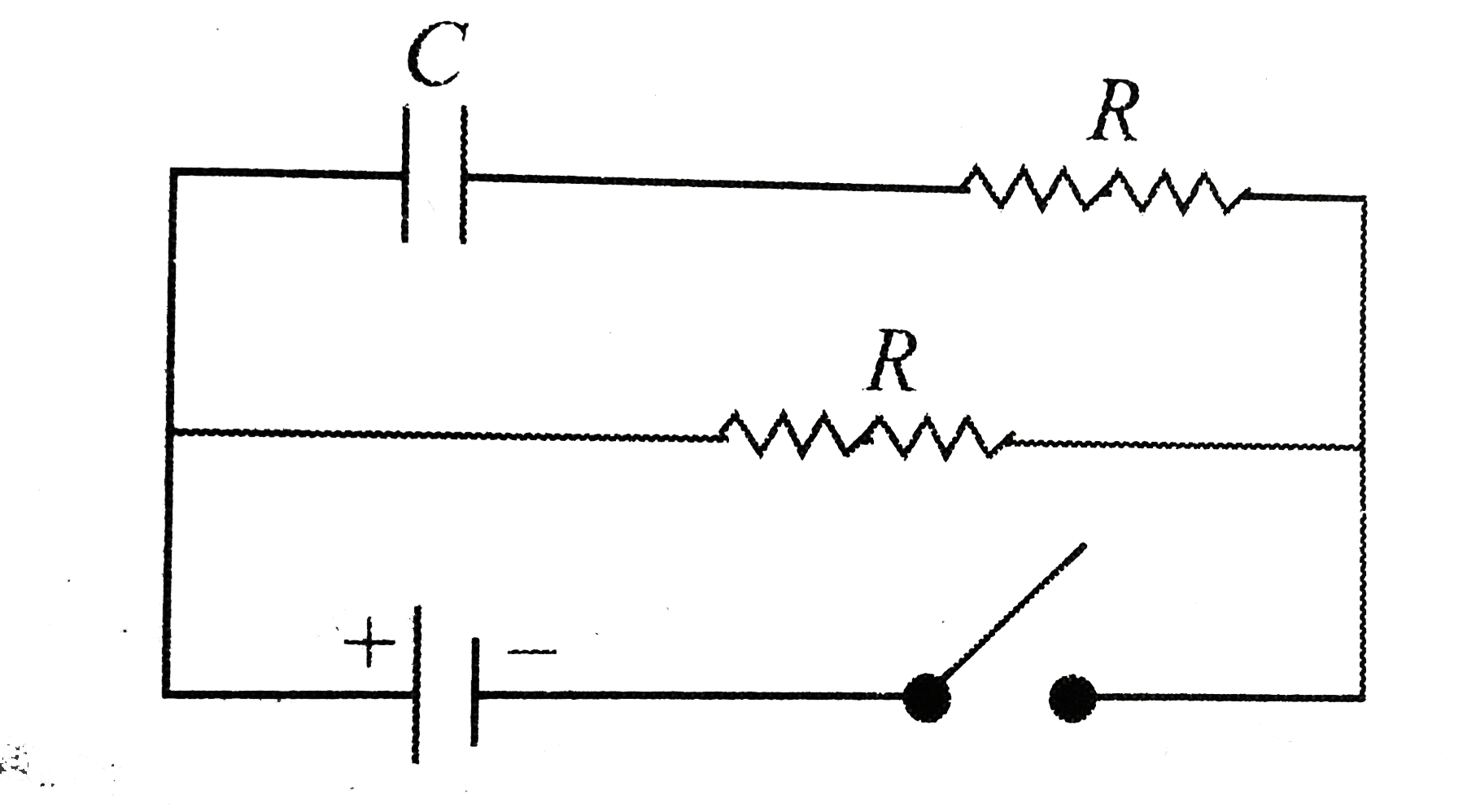 View Solution
View SolutionIn the circuit shown in figure the switch S is closed at t = 0. A long time after closing the switch
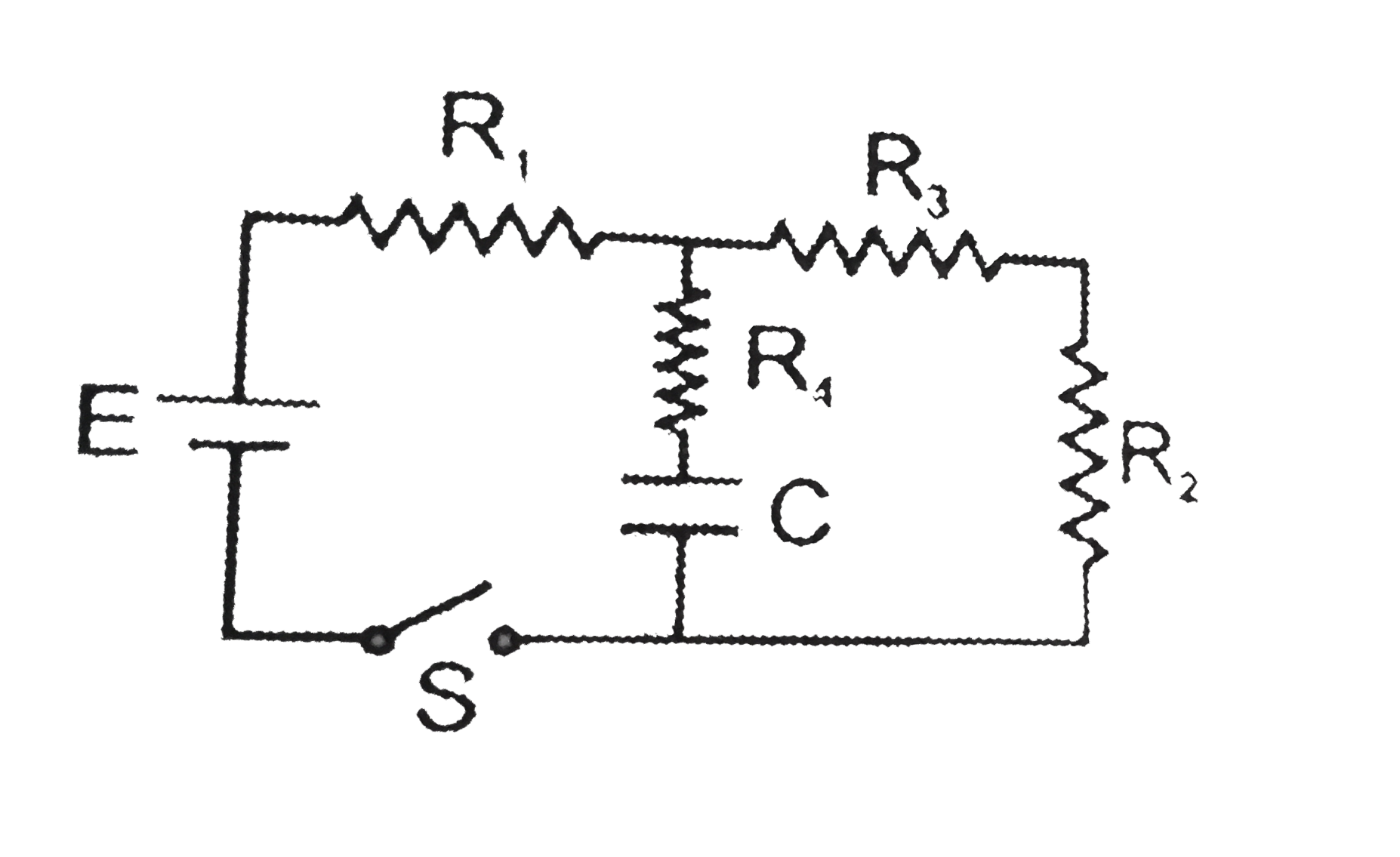 View Solution
View SolutionIn the circuit shown in figure switch S is closed at time t=0, which statement is true after one time constant of L-R circuit?
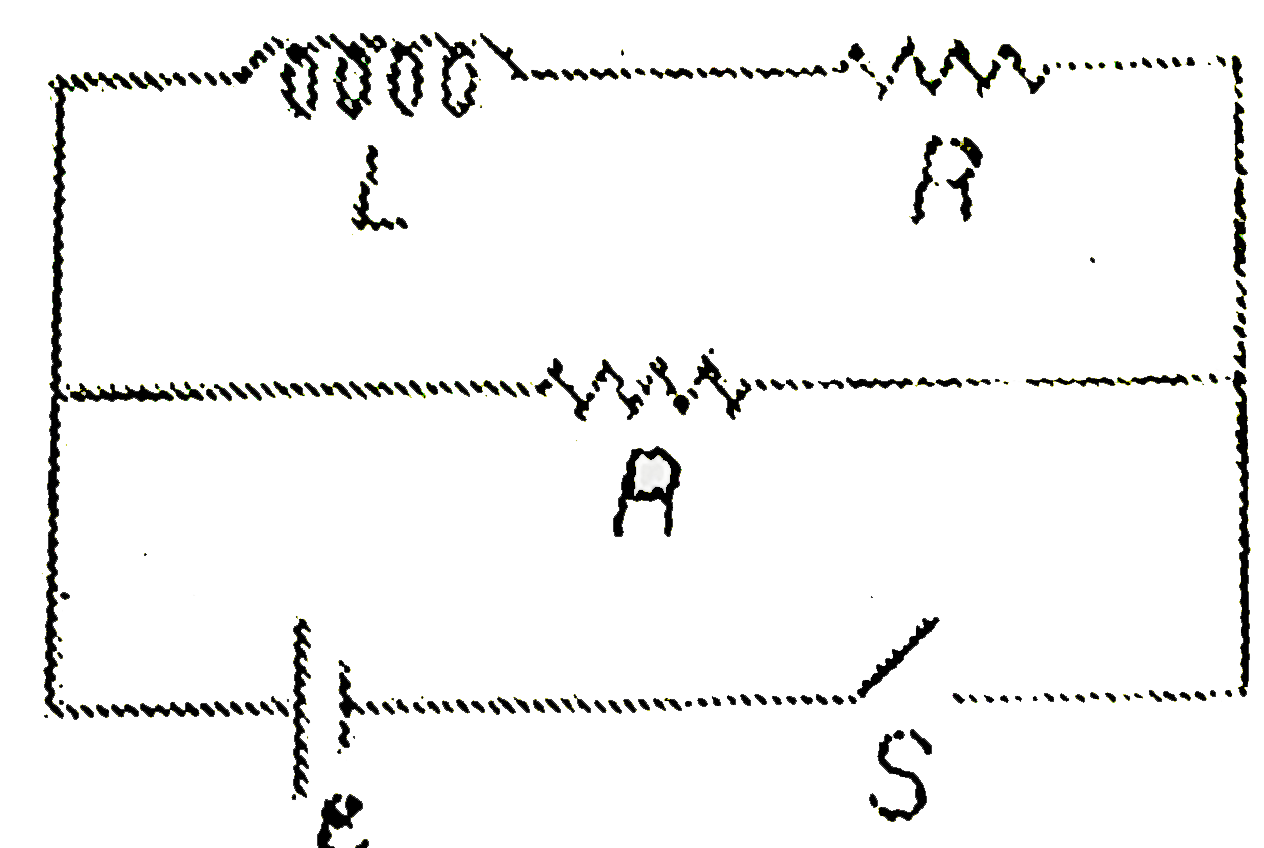 View Solution
View SolutionIn the circuit shown, the switch 'S' is closed at t=0. Then capacitor is initially uncharged. Then the current through the resistor R=8Ω at t=0.4×10−3sec is (Take e−2=0.135 )
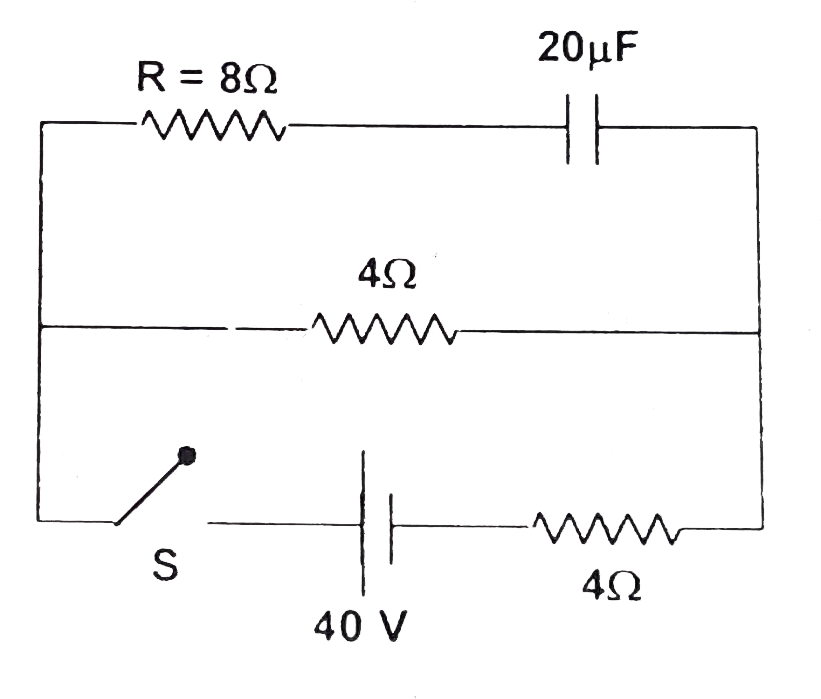 View Solution
View SolutionConsider the LR circuit shown in the figure. If the switch S is closed at t = 0 then the amount of charge that passes through the battery between t=0 and t=LR is
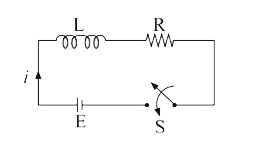 View Solution
View SolutionIn the circuit arrangement shown in figure, the switch S is closed at t=0. Find the current in the inductance as a function of time? Does the current through 10Ω resistor vary with time or remains constant.
 View Solution
View SolutionIn the circuit shown in figure switch S is closed at time t=0. The charge which passes through the battery in one time constant is
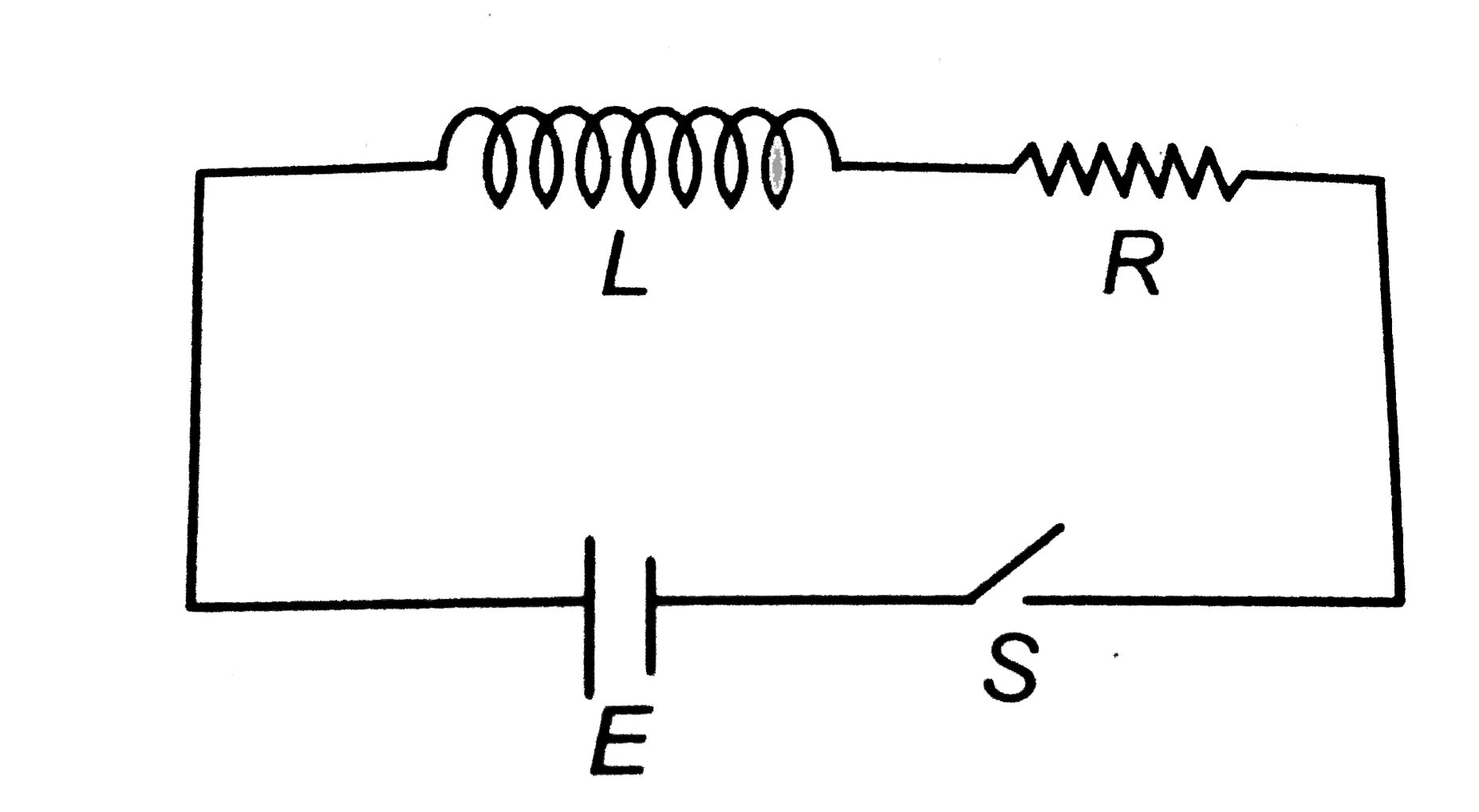 View Solution
View Solution
In given LR circuit the switch S is closed at time t=0 thenView SolutionIn the circuit shown in the figure, switch S is closed at time t=0. Select the correct statements.
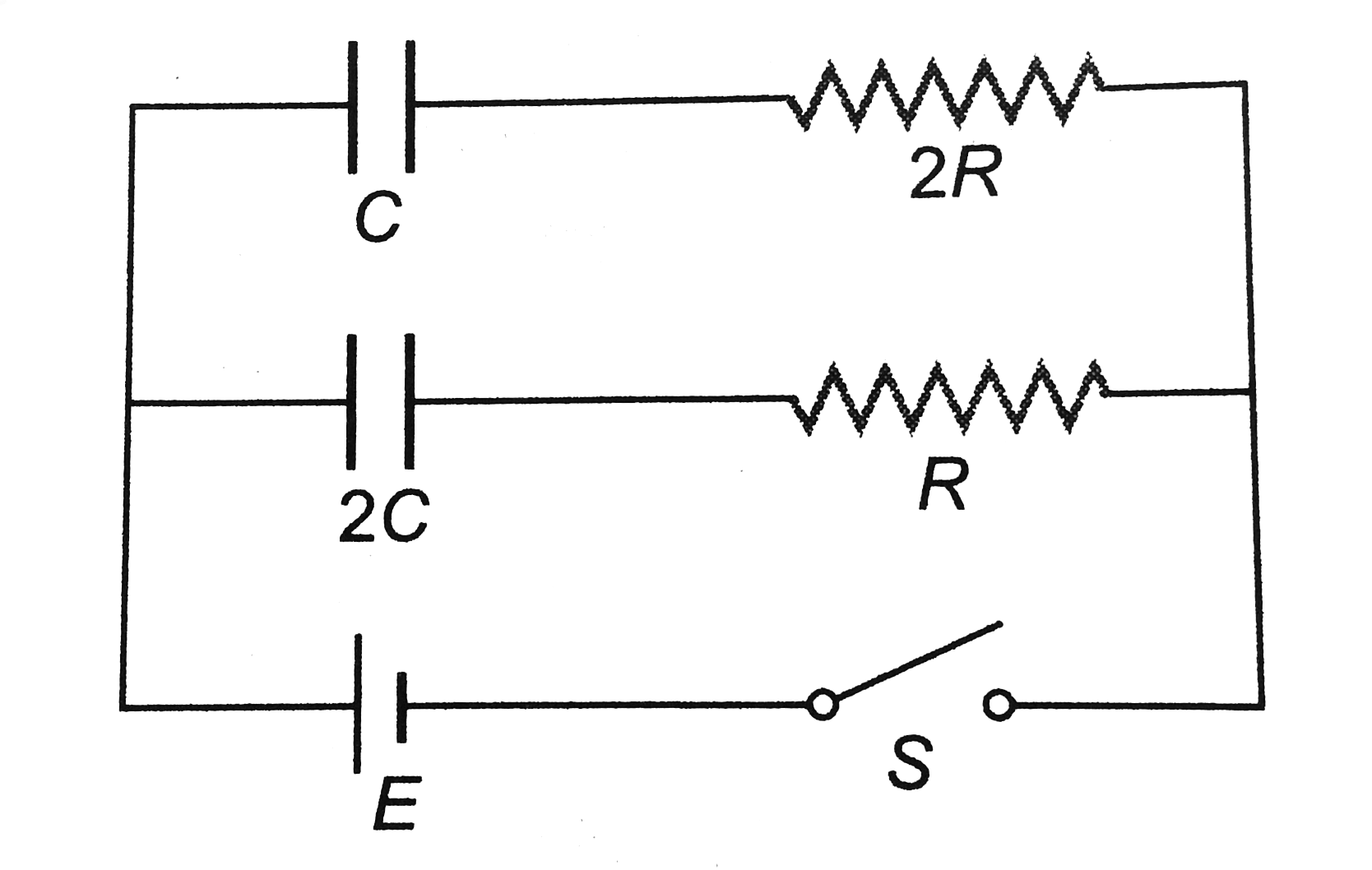 View Solution
View SolutionIn the circuit shown in the figure, switch S is closed at time t=0. Select the correct statements.
 View Solution
View Solution

